When storm (cyclone) warnings are given by news channels, they mostly report only the storm warning signal numbers hoisted in sea ports. What those signal numbers imply are not known to the common man listening/viewing the news.
Here are some details of Visual Storm (Cyclone) Warning Signals for Indian Sea Ports.
- The India Meteorological Department (IMD) is responsible for providing tropical cyclone warnings.
- Tropical cyclone warnings are provided by three Area Cyclone Warning Centres (ACWCs) located at Kolkata, Chennai and Mumbai in addition to three Cyclone Warning Centres at Bhubaneswar, Visakhapatnam and Ahmedabad.
- The entire cyclone warning work is coordinated by the Deputy Director General of Meteorology (Weather Forecasting) at Pune and Deputy Director General of Meteorology (Services) at New Delhi.
- Tracking of tropical cyclones is done by integrating data collected from:
- conventional surface and upper air observations from inland and island stations, coastal Automatic Weather Station (AWS), ships and buoy observations.
- cyclone detection radar including Doppler Weather Radar.
- satellite cloud pictures from the Geostationary Satellite (INSAT 3A & Kalpana1).
- Classifications of cyclonic disturbances for the north Indian Ocean region (Weather system and Maximum wind speed):
- Low-pressure area: Wind speed less than 17 knots (31 km/hour)
- Depression: Wind speed between 17 and 27 knots (32 and 51 km/hour)
- Deep Depression: Wind speed between 28 and 33 knots (52 and 61 km/hour)
- Cyclonic storm: Wind speed between 34 and 47 knots (62 and 88 km/hour)
- Severe cyclonic storm: Wind speed between 48 and 63 knots (89 and 118 km/hour)
- Very severe cyclonic storm: Wind speed between 64 and 119 knots (119 and 221 km/hour)
- Super cyclonic storm: Wind speed 120 knots (222 km/hour) and above
Visual Storm (Cyclone) Warning Signals:
The storm warning signals (both day and night signals) are hoisted prominently on masts in ports. Day signals are in the form of cones and cylinders. Night signals are in the form of red and white lamps. In addition to hoisting signals, most of the ports have arrangements to disseminate information and warnings received by them to ships in harbour and to ships leaving/entering harbour.
Signal Number One:
Distant Cautionary Signal Number One |
| 1. Implies that there is a region of squally weather in which a storm may be forming (well marked ) low or depression with surface winds up to 61 km/hour (33 knots) | 2. Day and Night signals shown below are hoisted to indicate that ships may be exposed to danger after leaving the harbour. |
Day Signal | Night Signal |
 | 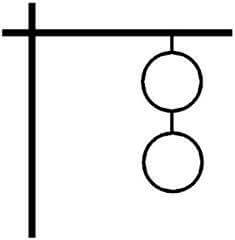 |
Signal Number Two:
Distant Warning Signal Number Two |
| 1. Implies that a storm has formed (a cyclonic storm with surface winds 62-88 km/hour (34-47 knots)) | 2. Day and Night signals shown below are hoisted to indicate that ships may be exposed to danger after leaving the harbour. |
Day Signal | Night Signal |
 | 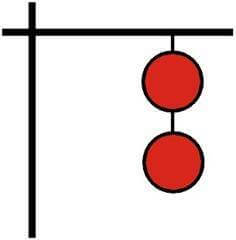 |
Signal Number Three:
Local Cautionary Signal Number Three |
| 1. Implies that the port is threatened by squally weather (cyclonic circulation with surface winds 40-51 km/hour (22-27 knots) or squalls due Northwesters) | 2. Day and Night signals shown below are hoisted to indicate that the port itself and the ships in harbour are in danger. |
Day Signal | Night Signal |
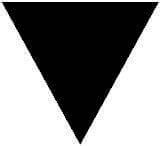 | 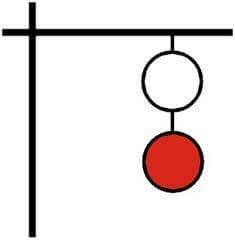 |
Signal Number Four:
Local Warning Signal Number Four |
| 1. Implies that the port is threatened by a storm, but it does not appear that the danger is as yet sufficiently great to justify extreme measures of precaution (cyclonic circulation with surface winds 52-61 km/hour (28-33 knots)) | 2. Day and Night signals shown below are hoisted to indicate that the port itself and the ships in harbour are in danger. |
Day Signal | Night Signal |
 | 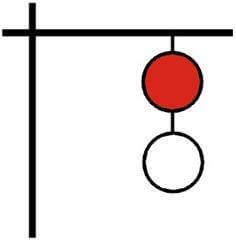 |
Signal Number Five:
Danger Signal Number Five |
| 1.Implies that the port will experience severe weather from a storm of slight or moderate intensity that is expected to cross the coast keeping the port to the left of its course (to the east of the port in the case of Mangla) (cyclonic storm with surface winds 62-88 km/hour (34-47 knots)) | 2. Day and Night signals shown below are hoisted to indicate that the port itself and the ships in harbour are in danger. |
Day Signal | Night Signal |
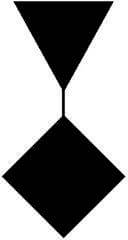 |  |
Signal Number Six:
Danger Signal Number Six |
| 1. Implies that the port will experience severe weather from a cyclone expected to move keeping the port to the right of its track. | 2. Day and Night signals shown below are hoisted to indicate that the port itself and the ships in harbour are in danger. |
Day Signal | Night Signal |
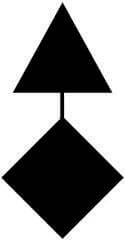 |  |
Signal Number Seven:
Danger Signal Number Seven |
| 1. Implies that the port will experience severe weather from a cyclone expected to move over or close to the port. | 2. Day and Night signals shown below are also hoisted when a storm is expected to skirt the coast without (actually) crossing it. |
Day Signal | Night Signal |
 | 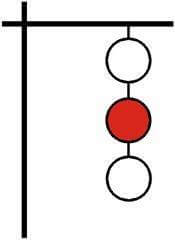 |
Signal Number Eight:
Great Danger Signal Number Eight |
| 1. Implies that the port will experience severe weather from a severe cyclone expected to move keeping the port to the left of its track. | 2. Day and Night signals shown below are hoisted to indicate that the port itself and the ships in harbour are in danger. |
Day Signal | Night Signal |
 | 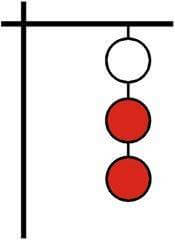 |
Signal Number Nine:
Great Danger Signal Number Nine |
| 1. Implies that the port will experience severe weather from a severe cyclone expected to move keeping the port to the right of its track. | 2. Day and Night signals shown below are hoisted to indicate that the port itself and the ships in harbour are in danger. |
Day Signal | Night Signal |
 |  |
Signal Number Ten:
Great Danger Signal Number Ten |
| 1. Implies that the port will experience severe weather from a severe cyclone expected to move over or close to the port. | 2. Day and Night signals shown below are also hoisted when a storm is expected to skirt the coast without (actually) crossing it. |
Day Signal | Night Signal |
 |  |
Failure of communication:
| Day and Night signals shown below are hoisted to indicate that communications with the meteorological warning centre have broken down, and the local office considers that there is a danger of bad weather. |
Day Signal | Night Signal |
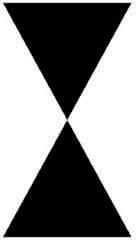 |  |

Leave a Reply